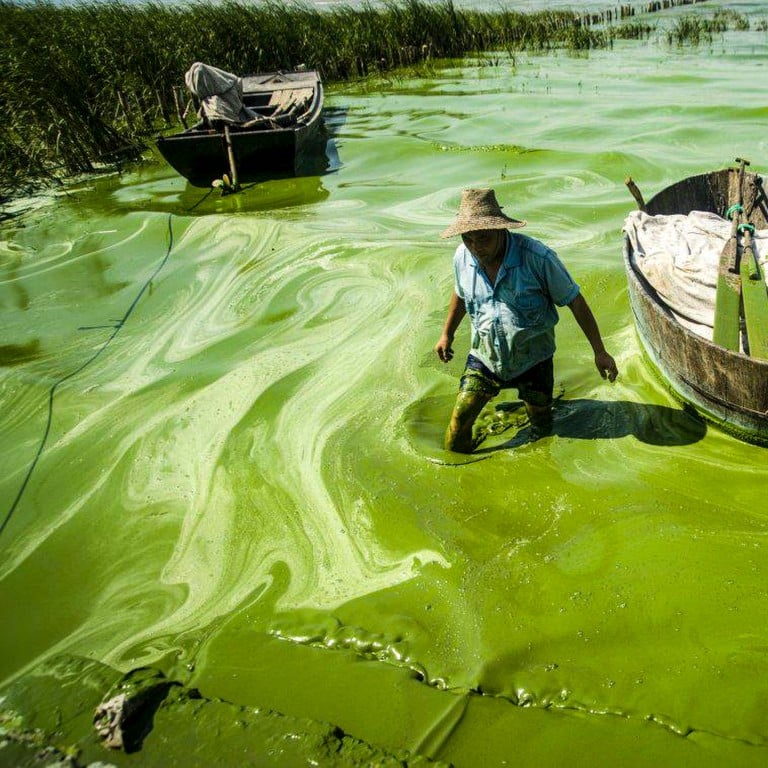
People in China among an extra 3 billion set to face freshwater scarcity by 2050 because of nitrogen pollution: study
- South China will be among areas at risk as high nitrogen levels continue to deplete clean water supplies, researchers in Germany and Netherlands say
- Modelling study shows need for urgent proactive pollution control strategies, team says in paper for Nature Communications
A team of researchers in Germany and the Netherlands estimates that small river basins in southern China, central Europe, North America and Africa will become water scarcity hotspots because of high nitrogen pollution levels.
“Our … assessment shows that nitrogen pollution in rivers [was] an important cause of water scarcity in 2010 and will likely continue causing water scarcity in 2050,” the team wrote in reporting on their modelling study.
“This calls for urgent proactive pollution control strategies to reduce the impact of future potential water scarcity on nature and humans,” the researchers said in their paper published in peer-reviewed journal Nature Communications on Wednesday.
China unveils new plan to clean up major rivers and lakes
A separate peer-reviewed study published in 2016 by scientists in the Netherlands found that 4 billion people – half of them in China and India – experience severe water scarcity at least one month each year.
Worldwide, 500 million people face severe water scarcity all year round.
Nitrogen is key to plant growth. But while fertilising crops with nitrogen could increase productivity, excessive and inefficient use of the nutrient could harm the environment. For example, water with too much nitrogen could trigger a proliferation of algae that would deplete oxygen and cause fish to die.
Wang Mengru, the lead author of Wednesday’s article, said excess nitrogen in water could also harm humans.
“Nitrogen pollution can lead to harmful algal blooms in surface water, which produce toxins that contaminate drinking water and cause health issues in humans, such as liver damage, diarrhoea and neurological problems,” said Wang, who is an assistant professor at the environmental systems analysis group of the Netherlands’ Wageningen University & Research.
“This will reduce the amount of clean water that can be safely supplied to nature and humans, leading to higher levels of water scarcity.”
Researchers from three German institutes and two in the Netherlands took part in the study.
Wang and her team found that the number of small river basins facing water scarcity was on track to triple in just over 25 years because of nitrogen pollution.
By 2050, more than 3,000 sub-basins would be at risk of being water quantity and quality scarce, they wrote. This would affect an extra 40 million square km of basin area and 3 billion more people who may potentially find clean water scarce, with China likely to be one of the hotspots.
Wang said China was at risk “because of high water withdrawals for irrigation purposes and high water pollution by nitrogen”.
The main causes of nitrogen pollution in China are low nitrogen use efficiency in agriculture, the need to boost harvests for the growing population, and poor treatment of increasing sewage, according to Wang.
“Not only does water quantity matter, water quality is also important and should be urgently addressed in future water management policies,” she said.
Wang added that more efficient use of water and nutrients in agriculture, better sewage treatment, and reducing water-intensive activities such as raising livestock for food and cutting food waste could help address future water security issues.

